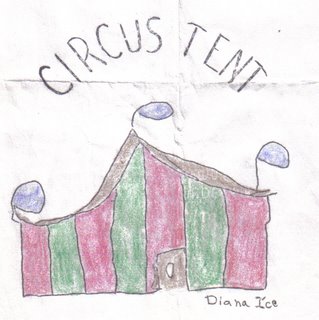THE ICE PICK
Internet Medieval Sourcebook,
www.fordham.edu/halsall/sbook.htmlThis excellent site, located at the Fordham University Center for Medieval Studies, is a part of the ORB, the Online Reference Book for Medieval Studies. It downloads fast and, if you like, will play one of several enjoyable Medieval tunes while you browse. The site is easy to navigate, and there is much here for writers of fantasy, historical, or time travel stories.
"Selected Sources" has excerpts of primary texts, while "Full Text Sources" gives complete texts of Medieval documents. Other articles are covered in "Selected Secondary Sources." "Medieval Source Projects" has only one item, which is in French.
"Saints’ Lives" is "devoted to Ancient, Medieval, and Byzantine hagiographical sources" and will give you information not only on religious history, but also social and cultural, including details of urban and rural society; commerce; military and political history; and daily life, such as food and drink.
"Medieval Legal History" has legal texts including Ancient, Byzantine, Roman, Germanic, English, Jewish, Islamic, and Christian canon law. For example, under the Roman Code of Civil Law, there are fascinating insights into the society, and possible story ideas, from cases about runaway slaves, the sale of children, marriage contracts made under duress, and determining responsibility for losing a king’s castle if the commander delegates the defense to another person, etc. Under canon law, there are monastic rules and examples of inquisitorial techniques, including questions asked of supposed heretics and sentences handed out. Church decrees include subjects like the murder of slaves and the misappropriation of church funds.
"Livres des Sources Medievales" has French texts "from the Middle Ages to the end of the Ancien Regime," and "Libro de fuentes medievales de Internet" includes Spanish documents.
The "Selected Sources" section comprises End of Rome, Byzantium, Islam, Roman Church, Early Germans, Celtic world, Carolingians, 10 C Collapse, Economic life, Crusades, Empire & Papacy, France, England, Celtic States, Iberia, Italy, Jewish Life, Intellectual Life, Medieval Church, Social History, States & Society, Renaissance, Reformation, and Exploration.
Feudalism is annoyingly hidden under the cryptic "10 C Collapse" and includes the Viking and Hungarian attacks.
Under feudalism’s "Oaths and Contracts," are the mutual duties of lords and vassals, samples of fidelity oaths from lord and vassal alike, homage ceremonies, etc. Under "Methods of Land Transfer," are examples of inheritance, grants, and fiefs. "Methods of supporting an army," "Methods of government," and "A Militarized society" also included.
"Economic life" includes Before the 11th Century, Trade and Commerce, The Rise of Towns, Industries, and Rural life. Information on the slave trade includes things like the purchase of a "Saracen maid" and selling slaves "to pagans for sacrifice." There is also information on the sea trade, fairs and markets, tolls (often in kind), bills of sale and lading, manor houses and manorial management, etc.
Under "Trade and Commerce," is a wonderful "list of prices of Medieval items" with dates. It includes some cultural information--like the weapons an English freeman was legally required to own and the amount of material needed to make a loose tunic--along with comparable wages for men and women by profession, and prices of tools, food, livestock, horses, books and education, armor, weapons, cloth and clothing, dowries, funerals, travel, and rent and building costs.
"Maps and Images" has beautiful Medieval maps of Europe and the Islamic world, mostly from Muir’s 1911 Historical Atlas. "Medieval Films" is an extensive list of movies with Medieval themes, and "Medieval Music" lists CDs featuring music for the major historical periods.
The "Search Page" uses Fordham’s Search Engine or Hotbot and has full instructions to help you. The "Help" page is "designed to be of use to any user of serious online resources who is looking for more information" and not just for this website.
There is so much more on this site than I can cover in a short review, that I urge you to take a look at it.
{Published in SF and Fantasy Workshop Newsletter, Oct. 2002.}
Labels: fantasy, Middle Ages, resources, world-building

